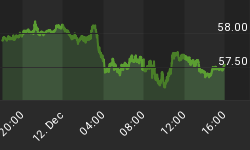Since the inception of the Dow Jones Industrial Average in 1896 there has been a long-term ebb and flow in the stock market known by many as the 4-year cycle. There have been 27 such completed 4-year cycles with an average duration of 47.04 months. I have identified specific common elements and markers that have occurred at all previous 4-year cycle tops and bottoms. Given that none of these common elements or markers have been seen since the 2002 4-year cycle low, the evidence continues to suggest that the market has not made a 4-year cycle top or bottom since the 2002 low. This in turn means that we are now seeing one of the longest 4-year cycles in stock market history. In the past, even the longest 4-year cycle advances ultimately ended with a decline into a low that was sufficient enough to trigger the same markers of all other 4-year cycle tops and bottoms.
I'm totally aware of the fact that few believe the 4-year cycle is still relevant and that many others believe that the 4-year cycle low occurred either in June 2006 or in March 2007. To be perfectly honest, I wish I could tell you that there was evidence to support this popular belief because it would make my job much easier in that that seems to be what people want to hear. But, the data simply does not support this. I can tell you with certainty that neither of the tops preceding these lows possessed the same characteristics as all previous 4-year cycle tops and neither of these lows possessed the same characteristics as any of the previous 4-year cycle lows. Thus, odds continue to suggest that the market remains in a very stretched and overdue 4-year cycle. With most people now in disbelief about the 4-year cycle the stage is set to take most market participants down along with the overdue 4-year cycle low. Much more specific details of this cycle and the surrounding statistics are available through Cycle News & Views. To view charts of this cyclical phenomena go to www.cyclesman.com/4-year_cycle.htm
As for the Dow theory, the Primary up trend was last reconfirmed on June 1, 2007. According to Dow theory, confirmation of a Primary up trend occurs when both the Industrials and the Transports better their previous "Secondary High Point." In contrast, confirmation of a Primary down trend occurs when both the Industrials and the Transports fall below their previous Secondary Low Point." It was back on April 1st when the April newsletter was released that I first reported I believed the March 2007 lows marked the previous "Secondary Low Points" for both the Industrials and the Transports. In the chart below I have marked each of the Secondary Low Points since the 2002 bottom.

In the wake of the rally out of the March 2007 lows both averages moved into joint new highs on April 25, 2007. As a result, that marked the 5th time that both averages have bettered their previous Secondary High Points since the advance out of the 2002 low began. In doing so the Primary Trend was reconfirmed as being bullish once again. From that joint high the Transports began to lag the Industrials. This non-confirmation was however short lived and the last confirmation occurred on June 1, 2007 when both averages closed at, yet again, all time highs and in doing so the bullish Primary Trend was reconfirmed once again.
I have said this before, but I feel that it must be said again. In my opinion the advance up out of the 2002 low has proven that the most important aspect of Dow theory is not value or market phasing, but rather it is the most basic principle of Primary Trend confirmation. As Robert Rhea said: "Under Dow's theory the primary trend, once authoritatively established as bullish, is considered to be continuing in force until negated by a confirmed bearish indication such as would be the case when, after a reaction of full secondary proportions in a bull market, a rally fails to lift both averages to new high ground, and a later decline carries both averages below the preceding secondary low."
So, the bottom line as I see it is that according to Dow theory the Primary trend will remain bullish until both averages move below their previous Secondary Low Points. All the while the cyclical/trend quantification work suggests that this advance is now among the longest on record and as we all know, what goes up, must eventually come down. The key in my work is to follow my intermediate-term Cycle Turn Indicators. When they are positive, the market will have the opportunity to move higher. But, when they turn it is an opportunity for a much larger correction than most people anticipate. This advance is overdone in time and is very overbought with lagging internals to boot. "Bear Markets begin when optimism is high AND some policy/geopolitical, political road block develops that undermines economic confidence." Conditions are right for some such fundamental event to come along and when it does the overdue statistics will begin to matter.
I have begun doing free Friday market commentary that is available to everyone at www.cyclesman.com/Articles.htm so please begin joining me there. Should you be interested in analysis that provides intermediate-term turn points utilizing the Cycle Turn Indicator on stock market, the dollar, bonds, gold, silver, oil, gasoline, the XAU and more, then please visit www.cyclesman.com for more details. A subscription includes access to the monthly issues of Cycles News & Views covering the Dow theory, and very detailed statistical based analysis plus updates 3 times a week.
















